2013-04-04 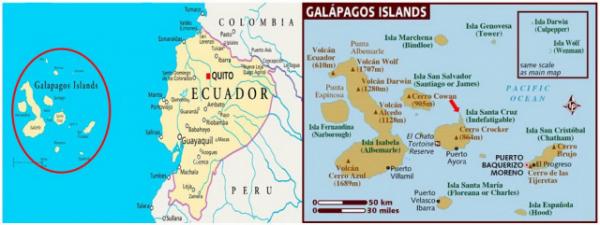
【Aiden in English】
North Seymour Island in the Galapagos was formed through a series of lava uplifts that originally erupted underwater, as evidenced by the discovery of marine fossils on its plateau, surrounded by low cliffs. These sporadic uplifts took more than a million years to elevate the island to its present level, and it is now home to an abundance of diverse wildlife. After lunch, we lined up for deep-sea snorkeling around North Seymour Island. My partner was another boy named Xander from California, US. He looked enthusiastic in my age bracket and had a sense of humor. We knew each other through jokes. During our shore excursions, we shared new jokes, discussed our school life, and joked about video games. Before we knew it, we were jumping over the Zodiac's sides into the Pacific Ocean. Numerous fish-populated boulders were covered with algae, sea urchins, cucumbers, and slipper lobsters. A fur seal jumped into the cool water and followed us, scaring off the fish. After it got boring, we saw a school of fish come back. Scythe butterflyfish of all sizes paraded out of cracks while giant damselfish slowly swam along the rocks. Bullseye puffer floated luxuriously, and trumpetfish darted casually among tiny pilotfish. A white-tipped reef shark then came into view, making several people scream. We ended it with four reef coral fish dashing around. After quickly changing clothes, we headed for bird watching on N. Seymour Island. A land iguana ate the opuntia on the evening trail and snaked across our path. It dragged its long tail, leaving a long line of footprints. A swallow-tailed gull with red eyes peeped from the nests, which meant she had a chick aside. Due to the dense vegetation on low and flat ground, North Seymour became home to the largest colonies of two species in the Galapagos: magnificent and great frigates. In early April, it fell into the breeding season for the frigate birds. Male frigates croaked with their dazzling red inflated pouch, attracting females with white necks. A large population of blue-footed boobies nested here, Boobyell. Mr. blue-footed Booby danced, whistled in high pitch, walked with exaggerated steps, and unfolded their wings for Miss blue-footed booby. Booby, A common cactus finch, built its nest in the prickly pears and chirped happily as we left the island. North Seymour Island was a unique "living museum and showcase of evolution." 【红霞译】 加拉帕戈斯“巨龟”群岛北西摩“黑皮肤”岛是由海底火山爆发后熔岩向海平面凸起所形成的岛屿,整个造山运动前后持续了至少一万年,岛上岩礁发现有海洋生物化石的存在,为上述推论提供了佐证。目前,这里已成为天然野生动物的家园。 吃罢午餐,我们列队去北西摩岛附近海域作深海潜水,同行的还有另外一位名叫山大“人类捍卫者”的男孩,他来自美国加州并与我同龄,不但精力充沛,而且非常风趣,只要一起出游,我俩就有说有乐,要么搬出笑话讲给对方听,要么交流学校里发生的趣闻轶事,要么干脆拿游戏开涮。
转眼间大家一起从快艇上跳入太平洋,水中鱼翔浅底,海藻海胆栖息岩礁,海参扇虾固守珊瑚,正如唐代诗人柳宗元《至小丘西小石潭记》中所描述的那样:“日光下澈,影布石上,怡然不动,俶尔远逝,往来翕忽,似与游者相乐。” 皮毛海狮扎猛钻进凉爽的海水,跟在我们屁股后面游来游去,一下子吓跑了身边不少鱼友。
皮毛海狮刚刚离去,鱼群随即蜂拥而至。“眼似真珠鳞似金,时时动浪出还沉 ”。各种大小的镰刀蝴蝶鱼一齐从石缝里窜了出来,列队游行浩浩荡荡;长背小叶齿鲷游走在岩石之间,你追我赶兴头正高;彩虹狗头四仰八叉漂浮海面,悠闲地享受无限风光;管口鱼跟小鲭鱼混得烂熟,随便出入朋友阵营,不知什么时候,白尖礁鲨突现眼前,顿时引起一片惊慌。“日暮紫鳞跃,圆波处处生”。上岸之前,四条棘烟管鱼主动跑过来跟我们腻歪了好一阵子。
潜水结束后,我们赶紧更衣,掉头便登上北西摩岛,实地参观野生动物生态环境。
走在北西摩岛平坦的小路上,陆生鬣蜥一边嚼着仙人掌,一边朝我们缓缓爬来,长长的尾巴后面留下了串串脚印。 长着一对红眼眶的燕尾鸥虎目圆睁,站在鸟巢里密切注视我们的动向,显然,她为了保护自己身边刚出世的宝宝。 因为灌木丛生,再加上地势低矮平缓,北西摩岛一举成为加拉帕戈斯群岛两种壮丽军舰鸟和大军舰鸟最大的繁殖地。眼下四月初,正值军舰鸟繁殖季节,公军舰鸟求偶时,脖子上鼓起的大红喉袋是吸引白脖子异性的重要法宝。 大量蓝脚鲣鸟同样喜欢在此安家落户。择友交配前,鲣鸟先生一定要靠跳舞唱歌、高抬阔步、频扇羽翼等表现手段来博取鲣鸟小姐的欢欣。 仙人掌地雀将鸟窝搭建在长满荆棘尖刺的仙人掌树上,见我们离去,欢快地放声高歌。 北西摩岛真是独一无二的“生物进化博物馆和活体标本陈列室”。 Today in History(历史上的今天):
2013: Bachas Beach, Ecuador(厄瓜多尔驳船海滩) 2012: 忆淮滨(In Memory of Huaibin) 2011: 埃及教长湾—和平之城(Sharm El-Sheikh the City of Peace, Egypt) 2011: 埃及亚历山大—地中海明珠(Alexandria—Pearl of the Mediterranean, Egypt) 2009: 玩具(Toys) 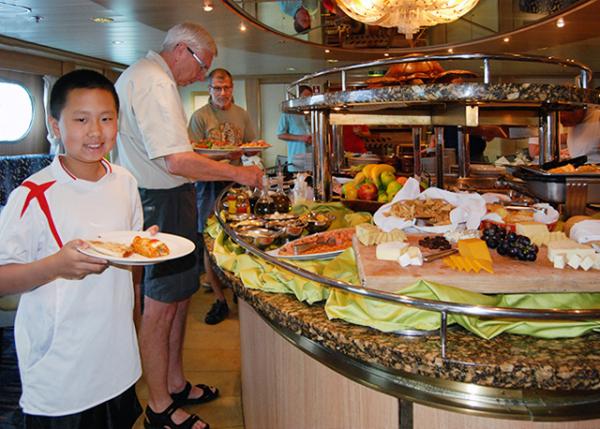 Lunch @ Celebrity Xpedition Lunch @ Celebrity Xpedition
(“名人·远征”号游轮——午餐 04-04-2013) 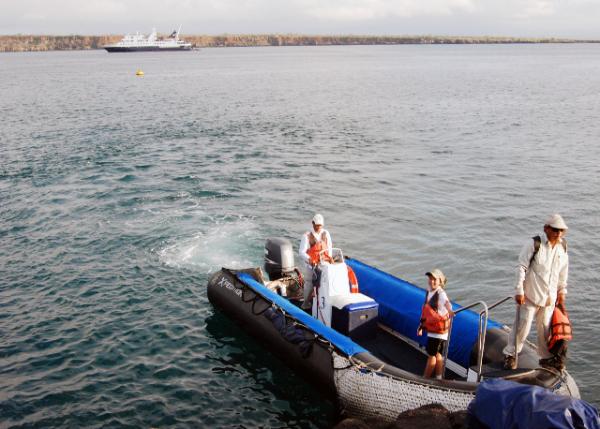 North Seymour Is, Birdwatching Paradise & Marine Life Encounters North Seymour Is, Birdwatching Paradise & Marine Life Encounters
(北西摩岛·观鸟天堂和邂逅海洋生物 04-04-2013) 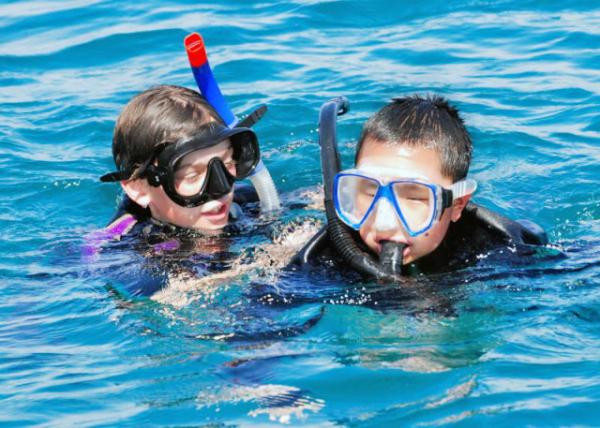 Deep Water Snorkeling (深水区浮潜 04-04-2013) Deep Water Snorkeling (深水区浮潜 04-04-2013)
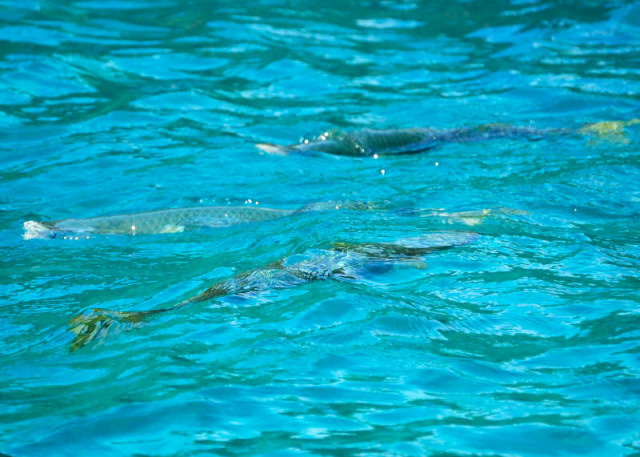
Tropical Fish (热带鱼)
 Sea Cucumber (海参) Sea Cucumber (海参)
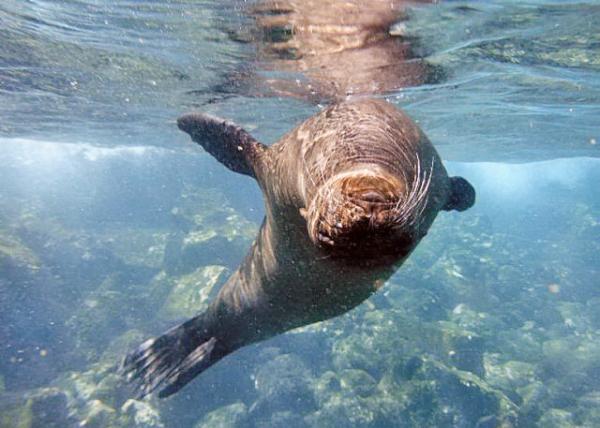 Sea Lion (海狮) Sea Lion (海狮)
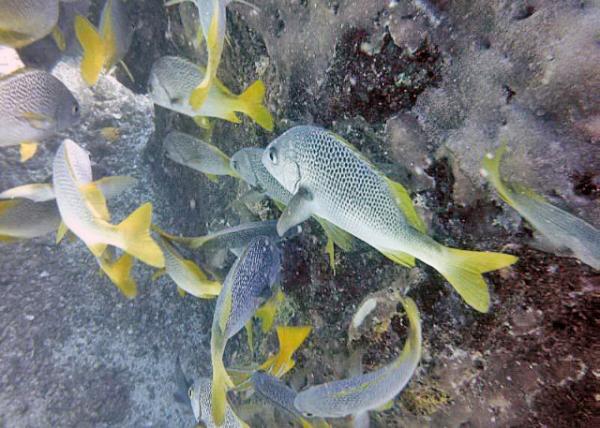 Burito Grunt (异孔石鲈) Burito Grunt (异孔石鲈)
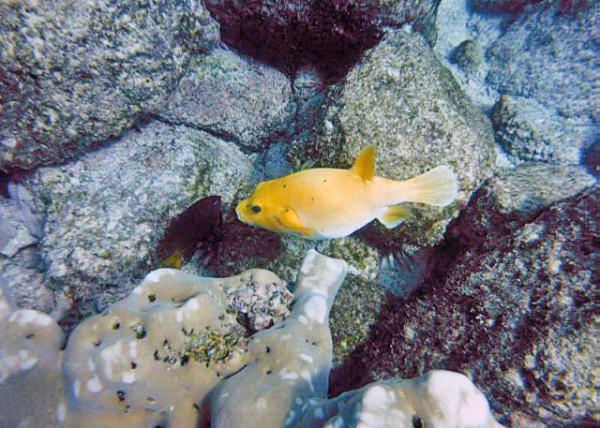 Guineafowl Puffer (白点叉鼻鲀) Guineafowl Puffer (白点叉鼻鲀)
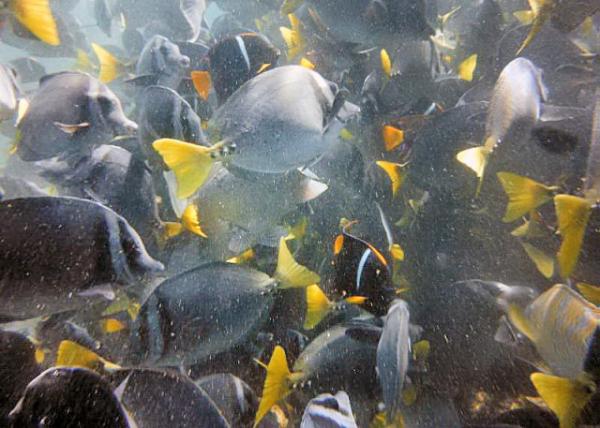 Razor Surgeonfish (侧棒多板盾尾鱼) Razor Surgeonfish (侧棒多板盾尾鱼)
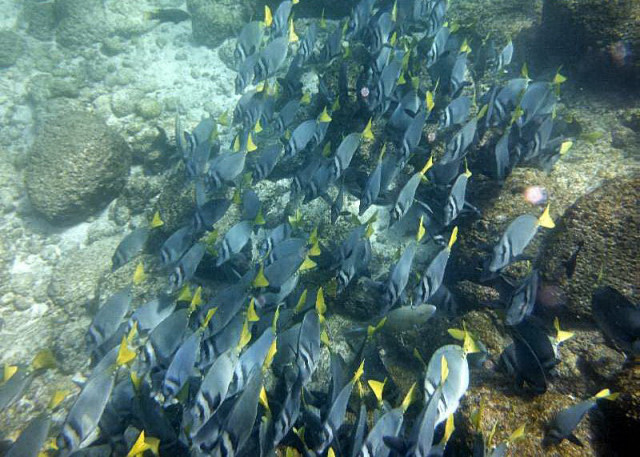
Razor Surgeonfish (侧棒多板盾尾鱼) 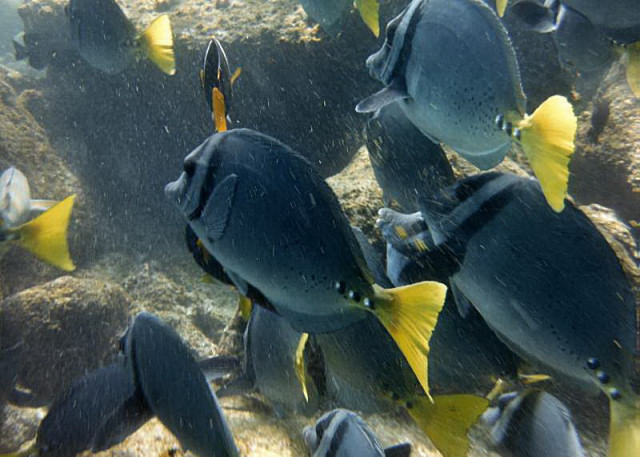
Razor Surgeonfish (侧棒多板盾尾鱼) 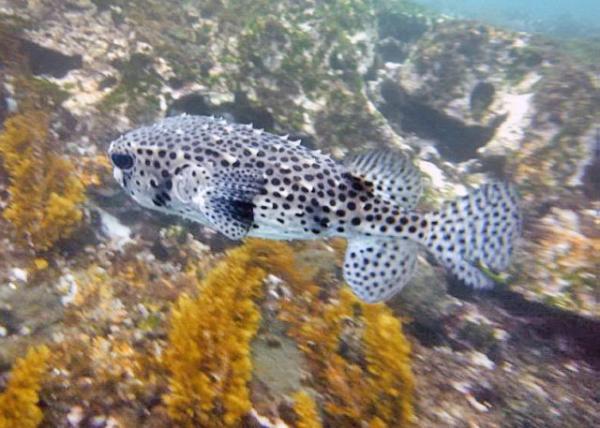 Spotfin Burrfish (斑鳍短刺鲀) Spotfin Burrfish (斑鳍短刺鲀)
 Land Iguana, Primarily Herbivorous Land Iguana, Primarily Herbivorous
(陆鬣蜥·主要食草 04-04-2013)
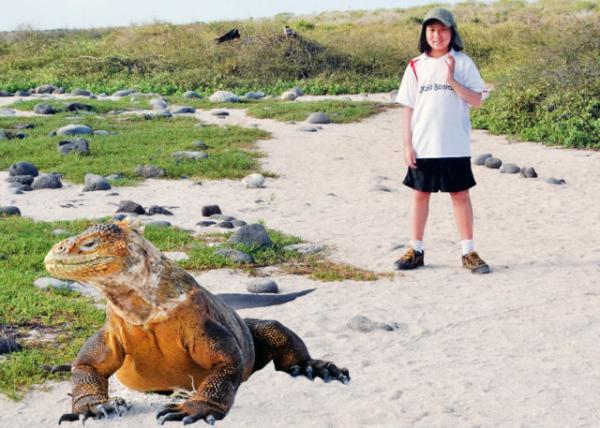 Land Iguana, the Cold-Blooded Land Iguana, the Cold-Blooded
(陆鬣蜥·冷血动物 04-04-2013) 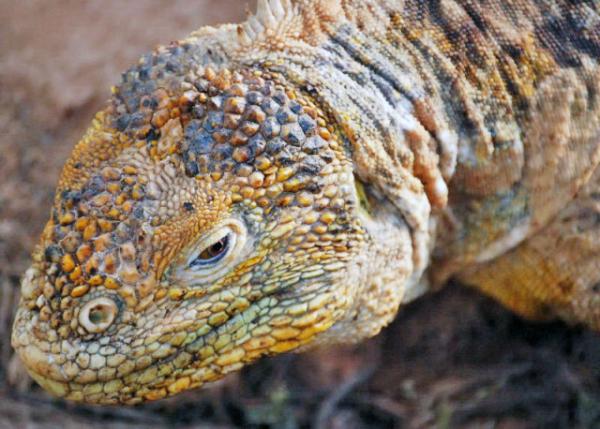 Land Iguanas, Heat-Absorbed from Sunbath on Volcanic Rock & Heat-Conserved in Burrows from Sleep at Night Land Iguanas, Heat-Absorbed from Sunbath on Volcanic Rock & Heat-Conserved in Burrows from Sleep at Night
(陆鬣蜥·白天在火山岩上晒太阳取暖,晚上在洞穴里睡觉以保留身体热量)
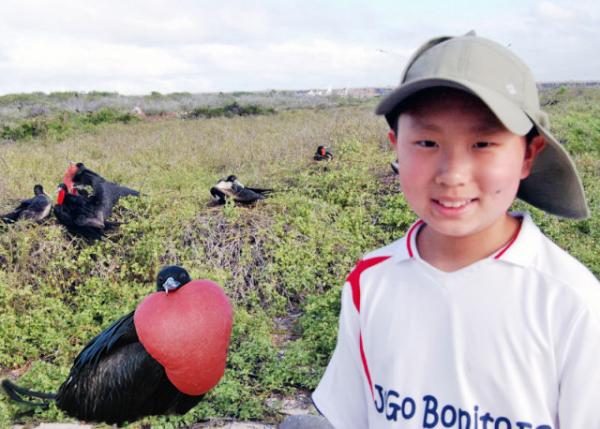 North Seymour Habitat (北西摩岛生态地貌 04-04-2013) North Seymour Habitat (北西摩岛生态地貌 04-04-2013)
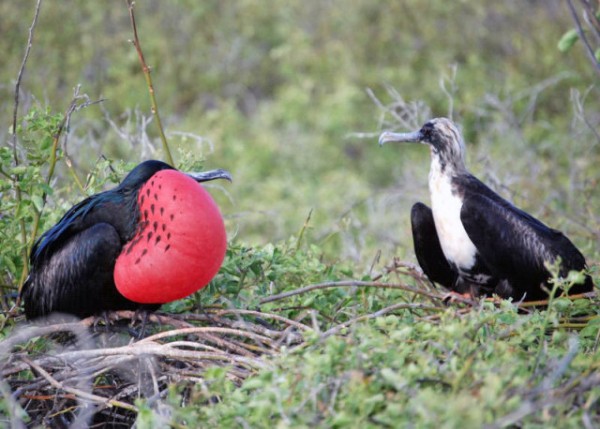
Magnificent Frigates' Kleptoparasitism, Pirates of the Air for Harassing Other Seabirds to Steal Their Food (庄丽军舰鸟盗寄生·因骚扰别的海鸟并抢夺其食物而冠以“空中海盗”) 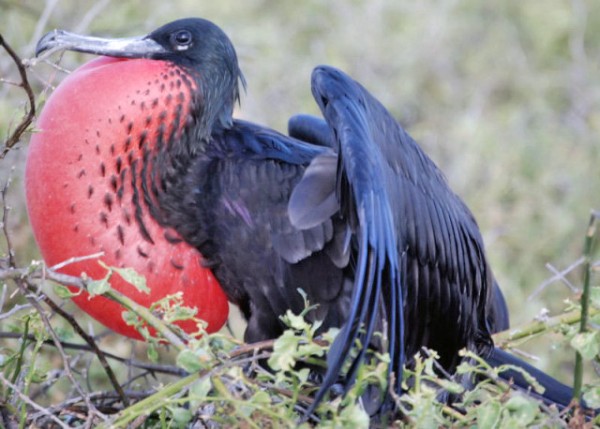
Male Magnificent Frigate w/ Feathers on Gular Sac (壮丽军舰鸟·喉囊上带有羽毛) 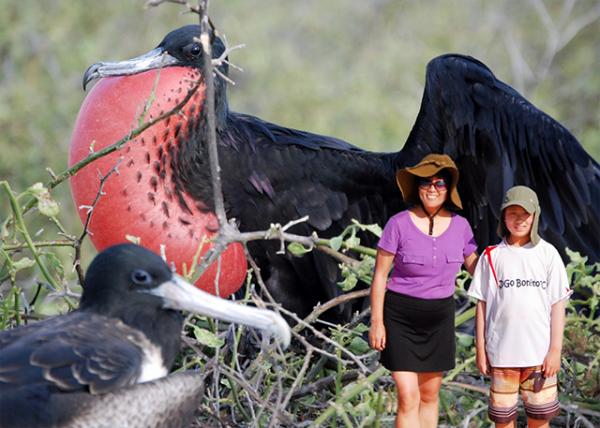 Magnificent Frigates, the Largest Wingspan to Body Weight Ratio of Any Bird in the World Magnificent Frigates, the Largest Wingspan to Body Weight Ratio of Any Bird in the World
(壮丽军舰鸟·拥有世上所有鸟类中最大的翼展与体重之比 04-04-2013) 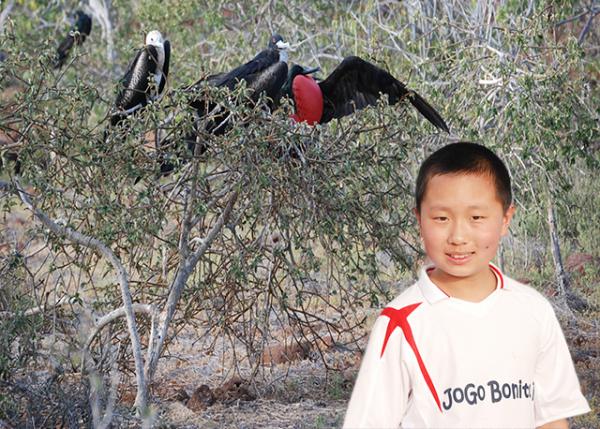 Magnificent Frigatebirds' Unique Adaptations, Primarily Stealing Food Rather Than Diving for It due to Lack of Waterproof Feathers Magnificent Frigatebirds' Unique Adaptations, Primarily Stealing Food Rather Than Diving for It due to Lack of Waterproof Feathers
(壮丽军舰鸟独特的适应性·因为没有防水羽毛,所有主要靠偷食而非潜水寻找食物 04-04-2013) 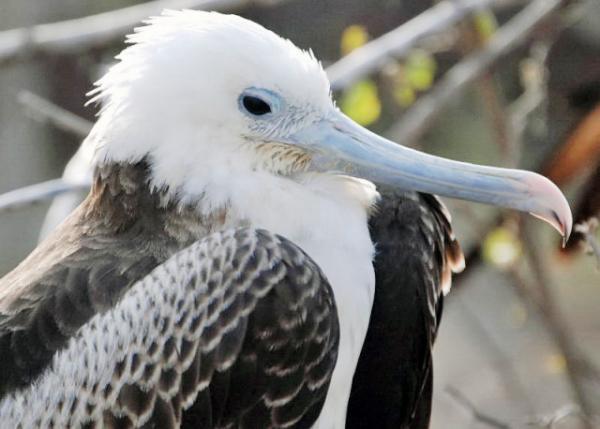 Magnificent Frigate Juvenile (壮丽军舰鸟幼仔) Magnificent Frigate Juvenile (壮丽军舰鸟幼仔)
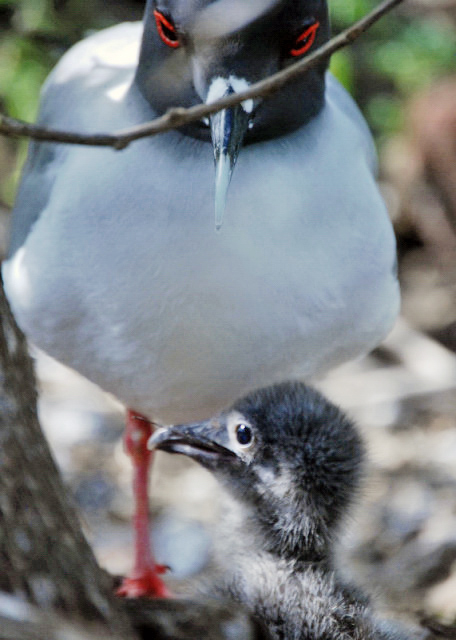
Mom Lava Gull & Chick (熔岩鸥妈与幼雏) 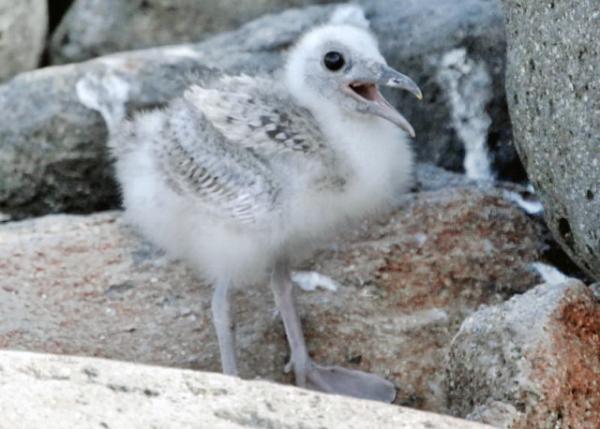 Lava Gull Juvenile (小熔岩鸥) Lava Gull Juvenile (小熔岩鸥)
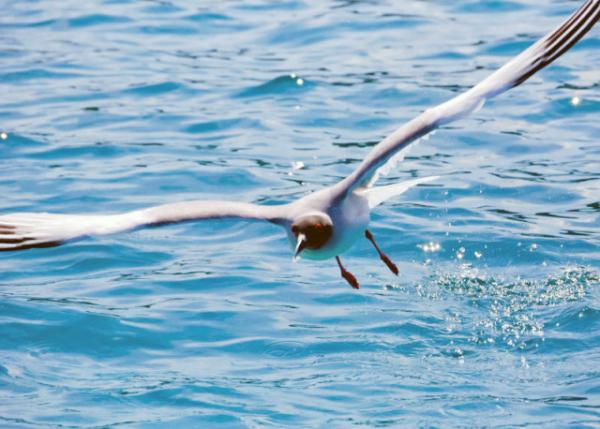 Lava Gull in Flight (飞行的熔岩鸥) Lava Gull in Flight (飞行的熔岩鸥)
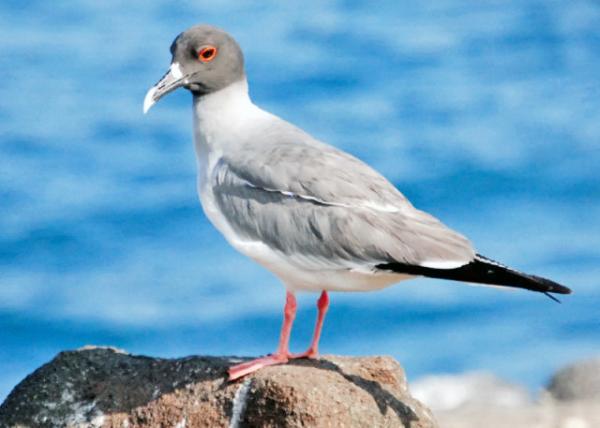 Lava Gull, the Rarest on Earth Lava Gull, the Rarest on Earth
(熔岩鸥·世上最罕见的海鸥) 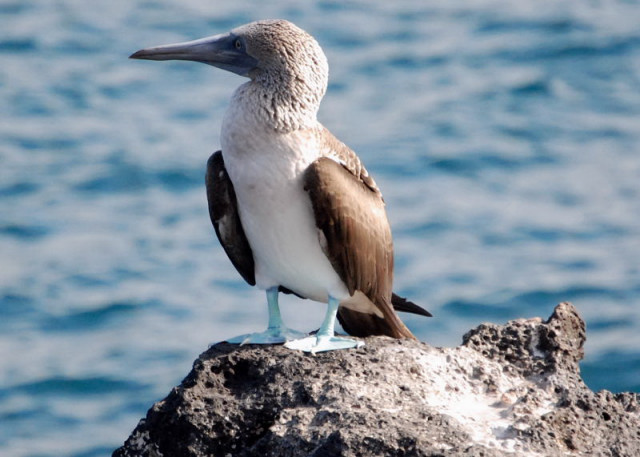
Blue-footed Booby, Distinctive Coloring in Neck, Head, & Beak (蓝脚鲣鸟·脖子头部Booby有不同) 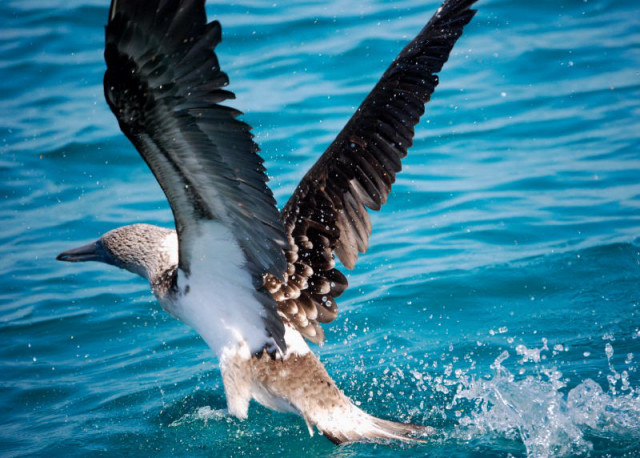
Blue-footed Booby,Brightnesss of the Feet Decreases w/ Age (蓝脚鲣鸟·脚的亮度会随着年龄的增长而降低) 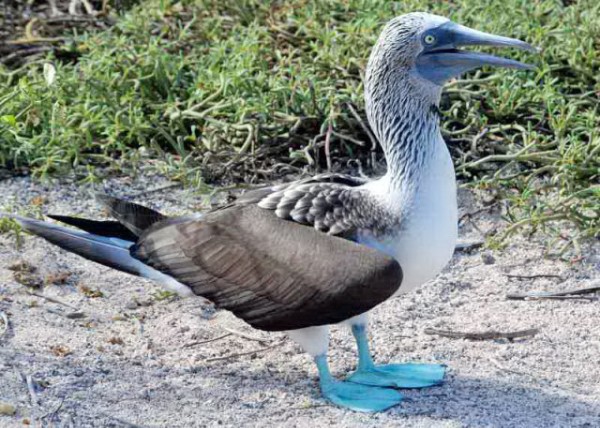
Blue-Footed Booby, a Symbol of Creativity & Dreaming (蓝脚鲣鸟·象征创造力和梦想) 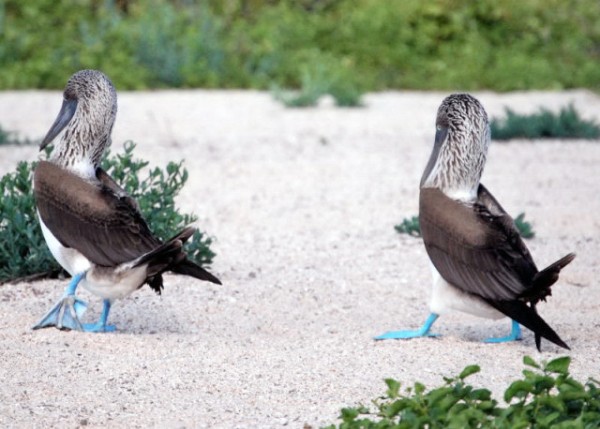
The Blue-Footed Boobie, a male, displays his feet in an elaborate mating ritual by lifting them up and down while strutting before the female. (雄性走在雌性前面,借助上下抬脚以示求爱) 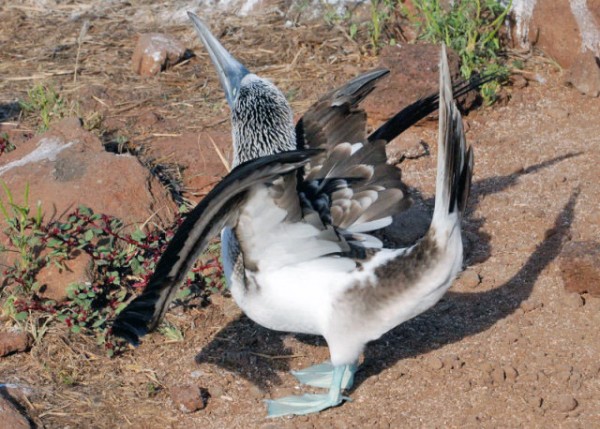
Blue-Footed Booby, Displaying w/ Sky-Pointing (蓝脚鲣鸟·指向天空求爱方式) 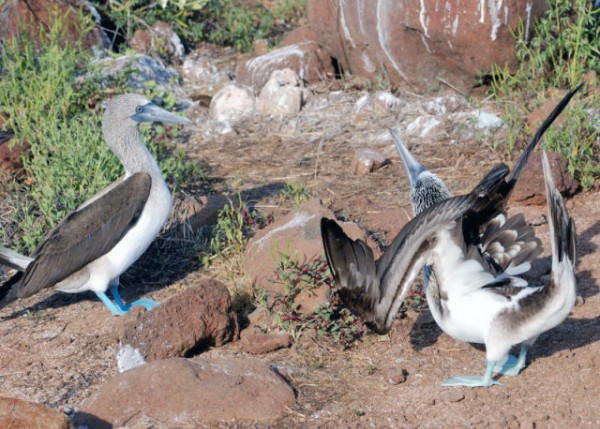
Male Blue-Footed Booby w/ Courtship Display in Front of a Female (公蓝脚鲣鸟向母蓝脚鲣鸟的求爱展示) 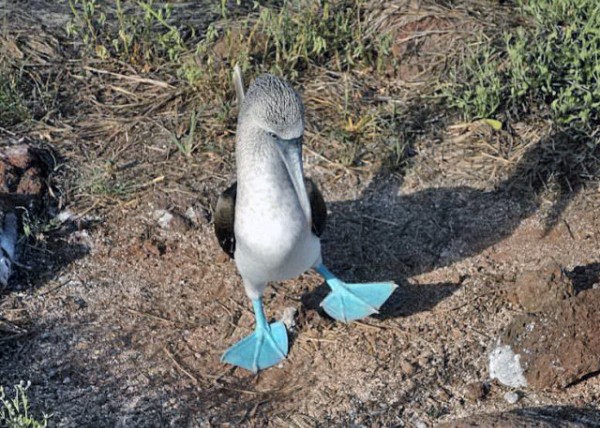
Male Blue-Footed Booby in Another Way of Displaying by Raising a Foot (公蓝脚鲣鸟的另一种求爱方式·抬脚)
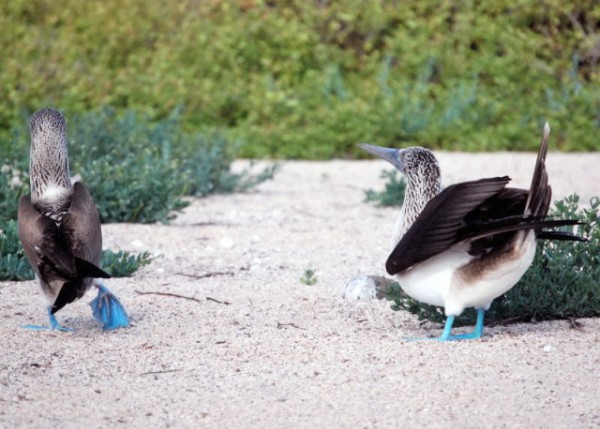
Mating Ritual: Lifting Back-Body up and down & Raising Foot (求爱仪式:上下撅尾巴与抬脚) 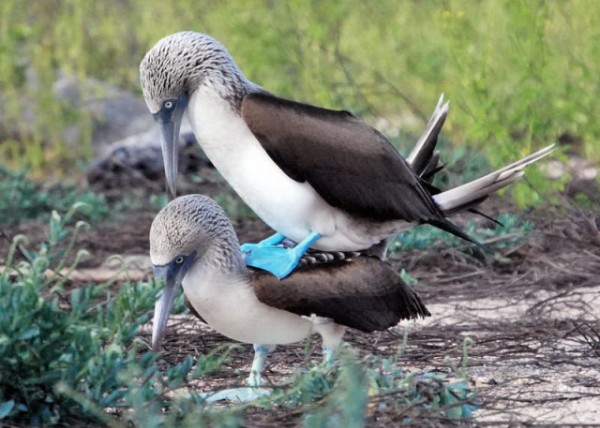
Male w/ a Smaller Pupil, Slightly Lighter Feet, & Smaller in Size Than the Female (雄性比雌性瞳孔小、脚板轻、体型小) 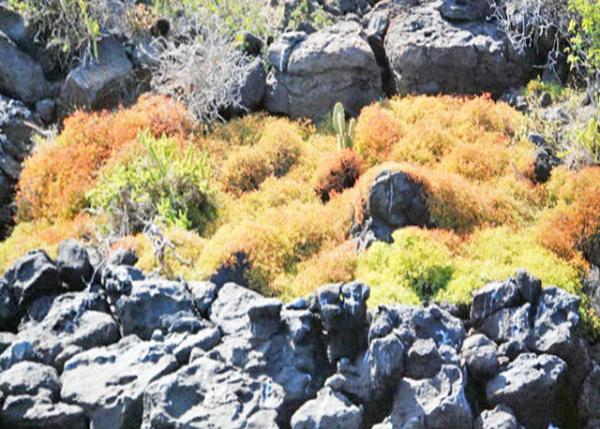 Galápagos Islands Xeric Scrub (加拉帕戈斯群岛旱生灌丛) Galápagos Islands Xeric Scrub (加拉帕戈斯群岛旱生灌丛)

Opuntia Forest (神仙掌林 04-04-2013) 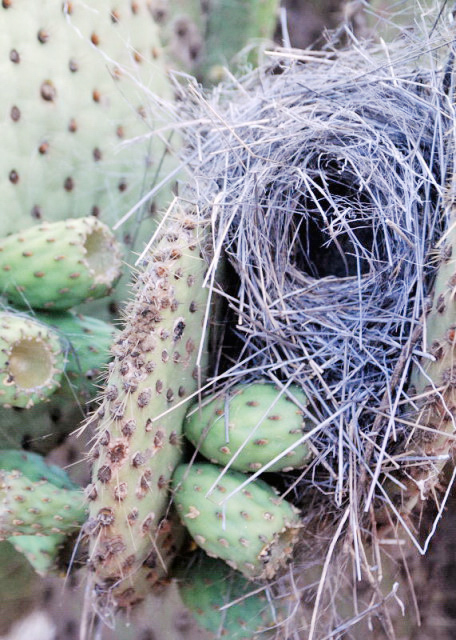
Fitch's Nest on Opuntia (神仙掌上燕雀窝) 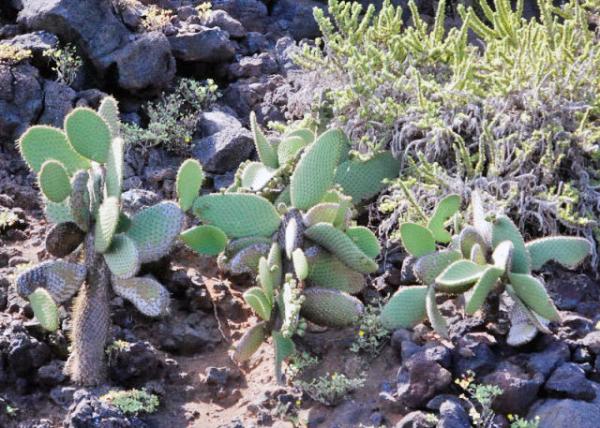 Opuntia (神仙掌) Opuntia (神仙掌)
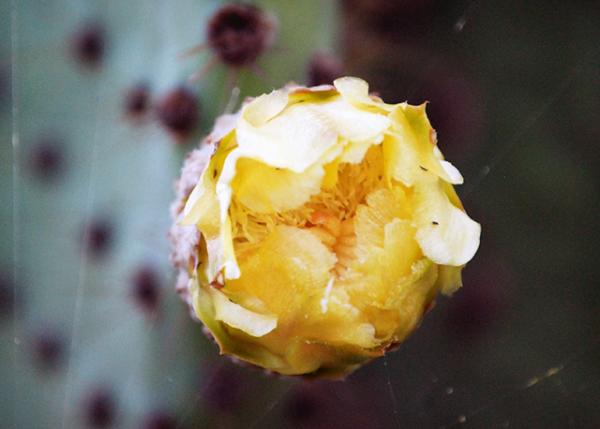 Opuntia Flower (神仙掌花) Opuntia Flower (神仙掌花)
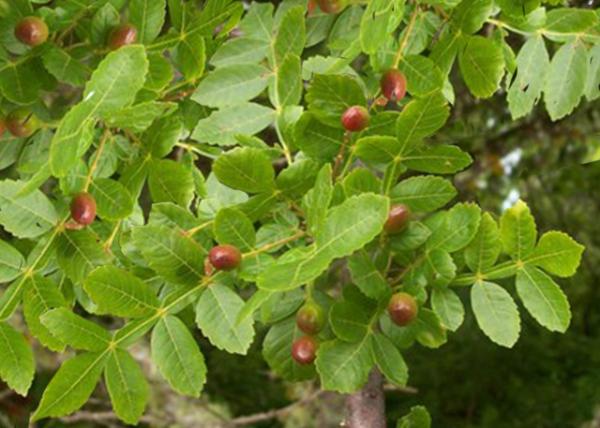 Palo Santo w/ Traditional Uses in Spiritual & Healing Practices Palo Santo w/ Traditional Uses in Spiritual & Healing Practices
(圣木·传统上用于心灵疗愈)
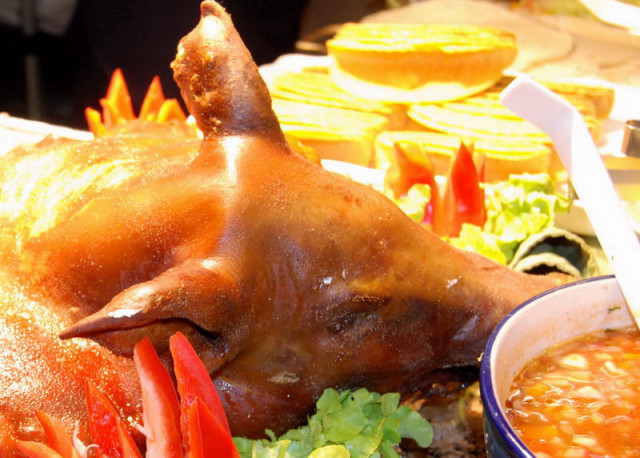
Dinner w/ Roast Suckling Pig @ @ Celebrity Xpedition (“名人·远征”号游轮晚餐——烤乳猪)
Crosslinks(相关博文):
2013: San Critobal's Kicker Rock/Witch Hill(巨龟群岛睡狮岩女巫岭)
2013: San Cristobal's Frigatebird Hill(巨龟群岛克里斯托瓦尔岛·军舰鸟山) 2013: St Cruz's Bachas Beach, Galapagos(巨龟群岛圣克鲁斯岛·巴查斯海滩) 2013: Bartolome Is Pinnacled in Galapagos(巨龟群岛巴托洛梅岛·尖峰岩) 2013: Santiego's Sullivan Bay, Galapagos(巨龟群岛圣地亚哥岛·苏利文湾) 2013: Isabella Is, the Largest & Wildest(伊莎贝拉岛·巨龟群岛最大最野) 2013: Rabida Is w/ Red Beaches, Galapagos(巨龟群岛拉比达岛·红沙滩) 2013: Santiego's James Bay, Galapagos(巨龟群岛圣地亚哥岛·詹姆斯湾) 2013: Baltra & Daphine Is, Galapagos(巨龟群岛巴尔特拉岛和达芙妮岛) Ecuador(出游厄瓜多尔)
South America(漂流南美洲) 小学四年级(4th Grade) |
